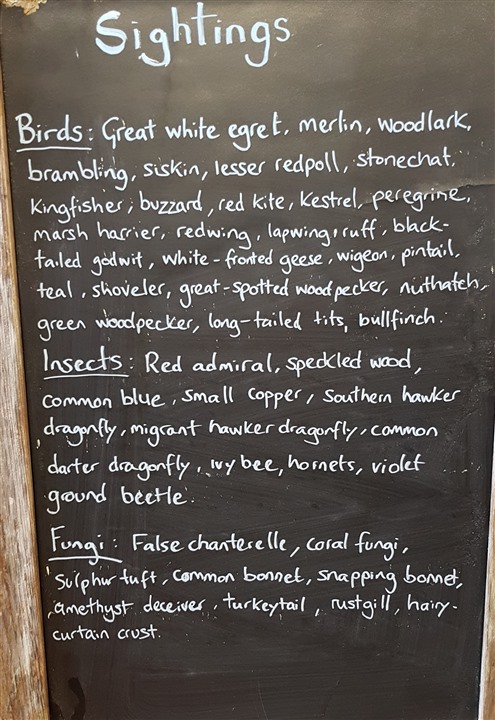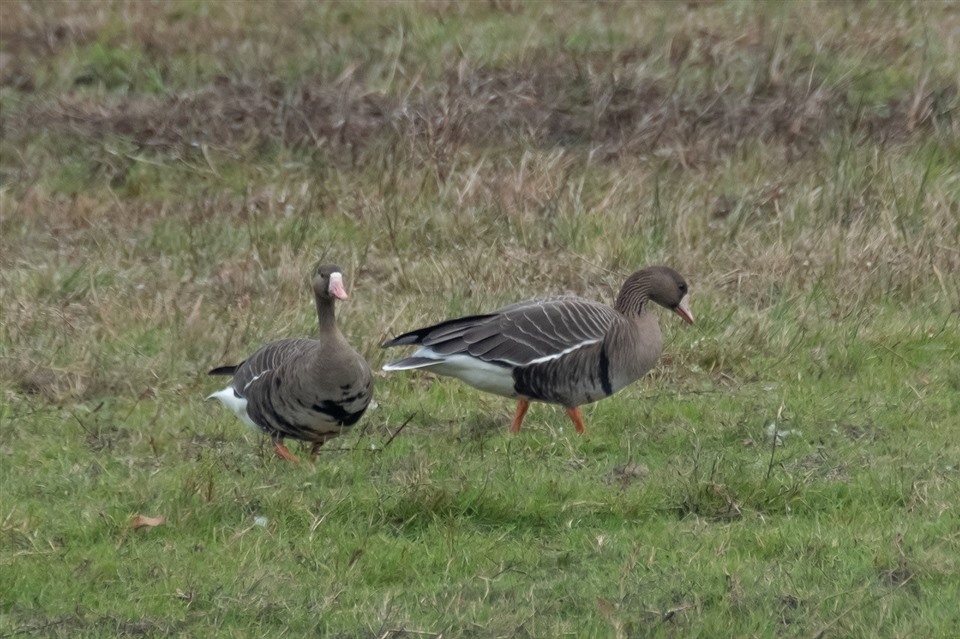
A good selection of wildlife spotted over the past few days. Highlights include great white egret, merlin and these white-fronted geese.

Photo by Graham Osborne.
The meadow feeding station is now back in action and is popular with great-spotted woodpecker, nuthatch, greenfinch, great tits, blue tits, coal tits, house sparrows and, I suspect, grey squirrels.
The fungi trail is up and running around the wooded heath …